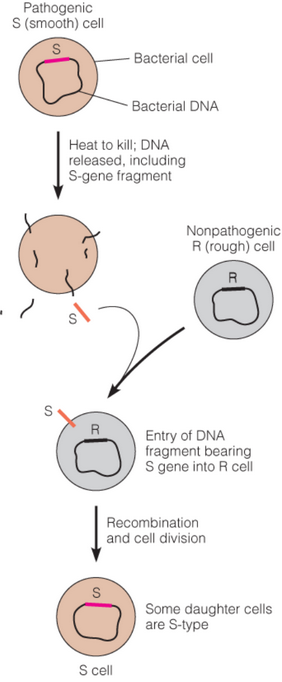6.2 Primary Structure of Nucleic Acids
There are two main important features of all nucleic acids - polynucleotide chains have…
a sense of directionality: an unreacted 5’ phosphate head and an unreacted 3’ hydroxyl group.
a sense of individuality (i.e., its primary structure).
Nucleic acids also have a compact nomenclature (e.g., “A,” “T,” “C,” and “G” for adenine, thymine, cytosine, and guanine respectively); the human genome also has about 6.5 billion nucleic acid base pairs.
6.2.1 DNA as a genetic substance
6.2.1.1 Early work with Pneumococcus

Figure 6.12: Early Genetic Work With Pneumococcus Bacteria
In 1944, scientists Oswald Avery, Colin Macleod, and Maclyn McCarty found out that the DNA of pathogenic strains of Streptococcus pneumoniae could be transferred into non-pathogenic strains, hence making them pathogenic in the process (see figure 6.12).
6.2.1.2 Evidence from studies involving bacteriophage T2
Figure 6.13: The Famous Hershey-Chase Experiment
In 1952, scientists Hershey and Chase studied the infection of E. coli by the bacteriophage T2. 32P-labelled DNA was transferred into the bacteria and was sufficient to direct the formation of new bacteriophages. Hence, the 35S-labelled proteins in figure 6.13 were not needed.
By 1952, it was generally known that DNA was the genetic substance of cells.